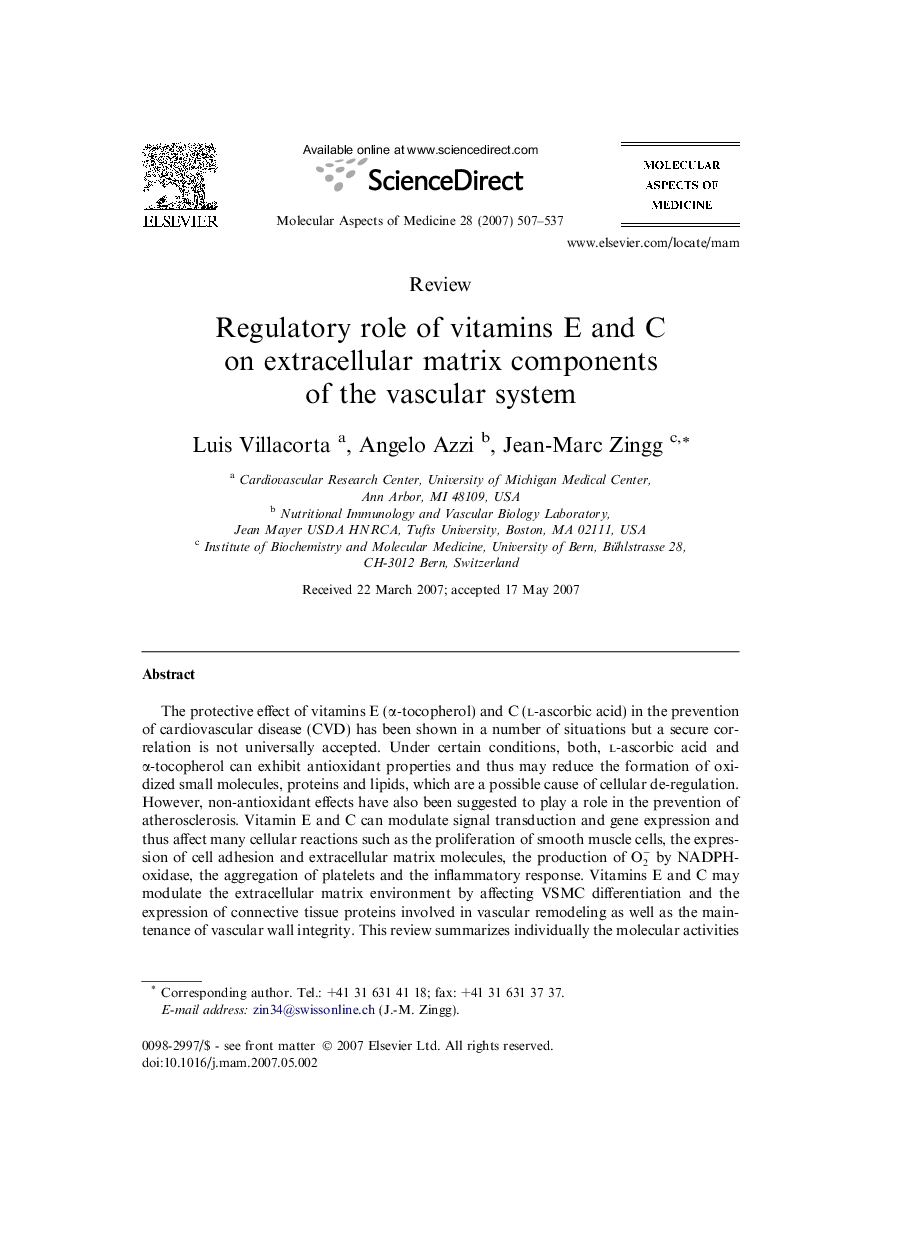| Article ID | Journal | Published Year | Pages | File Type |
|---|---|---|---|---|
| 1995867 | Molecular Aspects of Medicine | 2007 | 31 Pages |
The protective effect of vitamins E (α-tocopherol) and C (l-ascorbic acid) in the prevention of cardiovascular disease (CVD) has been shown in a number of situations but a secure correlation is not universally accepted. Under certain conditions, both, l-ascorbic acid and α-tocopherol can exhibit antioxidant properties and thus may reduce the formation of oxidized small molecules, proteins and lipids, which are a possible cause of cellular de-regulation. However, non-antioxidant effects have also been suggested to play a role in the prevention of atherosclerosis. Vitamin E and C can modulate signal transduction and gene expression and thus affect many cellular reactions such as the proliferation of smooth muscle cells, the expression of cell adhesion and extracellular matrix molecules, the production of O2- by NADPH-oxidase, the aggregation of platelets and the inflammatory response. Vitamins E and C may modulate the extracellular matrix environment by affecting VSMC differentiation and the expression of connective tissue proteins involved in vascular remodeling as well as the maintenance of vascular wall integrity. This review summarizes individually the molecular activities of vitamins E and C on the cells within the connective tissue of the vasculature, which are centrally involved in the maintenance of an intact vascular wall as well as in the repair of atherosclerotic lesions during disease development.
